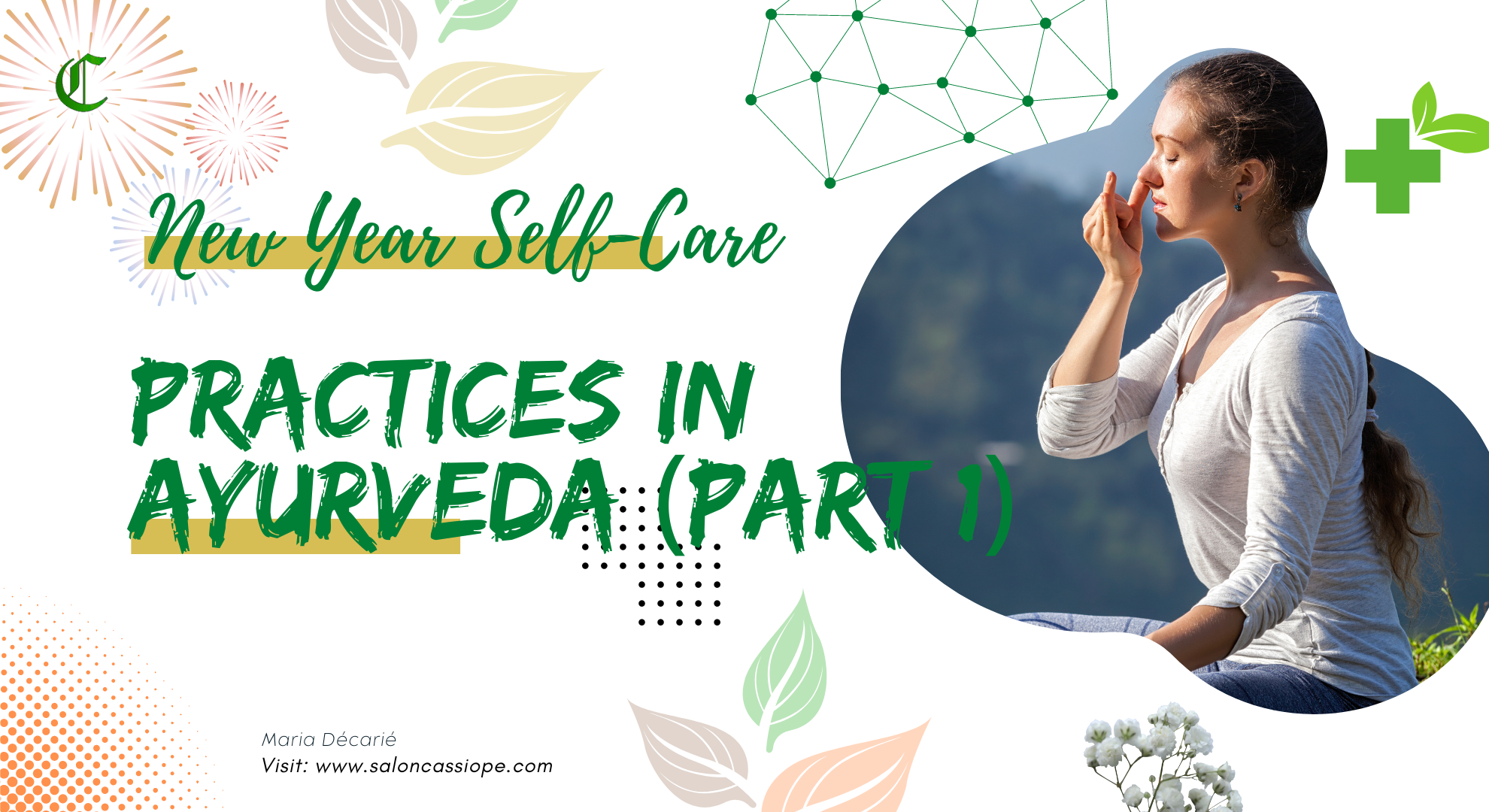Ayurveda recommends a few seasonal self-care practices to help deal with health concerns and improve overall well-being during this time of the year.
Nadi Shodhana is a simple yet effective technique for calming the mind, body, and emotions.
Nadi shodhana is a yogic breathing technique used to balance the brain’s right and left hemispheres. Shodhana means “to purify,” and Nadi means “channel.”
It can be used to calm your mind before beginning a meditation practice. It is beneficial for calming racing thoughts if you are experiencing anxiety, stress, or difficulty falling asleep.
Nadi Shodhana comes in a variety of styles, but they all aim to create balance and regulate airflow through your nasal passages. Nadi Shodhana translates as “clearing the circulation channels.”
Benefits of the Nadi shodhana breath (Alternate nostril breathing).
Nadi shodhana breath (Alternate nostril breathing) is one of the basic meditation techniques in Ayurveda.
You can regain mental and bodily equilibrium by inhaling through your alternate nostrils for just a few minutes.
When we are frazzled or do too many things at once, it is often because we are energetically out of alignment. This breath is excellent for reestablishing necessary balance.
Aside from relieving stress and calming the mind, alternate nostril breathing does the following:
Whether you’re stressed out, concerned about a conversation, or anxious about a project, Nadi Shodhana is a quick and peaceful approach to help you regain your composure.
If you struggle to relax in your meditations, consider doing a few rounds first, then staying sitting and going straight into silence; this should allow you to center yourself before you begin.
How to do the Alternate Nostril Breathing (Nadi shodhana)?
● Sit in a comfortable position. You can sit on the floor, or if you’re feeling fancy, on a cushion or chair.
● Close your eyes and inhale through your left nostril while placing your right hand over your right nostril.
● Hold your breath for a few seconds, then exhale through the right nostril by gently pressing down on it with your thumb as you breathe.
● Then repeat this process with alternating nostrils until you’ve finished all four rounds of alternate breathing (each round consists of one inhalation and exhalation).
How long should you practice the Nadi Shodhana?
The duration of this breath is three to five minutes. If you are new to this practice, start with three minutes and increase the time as you become familiar with it. You can do it once or twice a day in the morning or evening—any time works.
Nadi Shodhana can be practiced sitting upright on your mat, lying on your back, standing with feet shoulder-width apart, or even walking slowly around the room.
B) Practicing Pranayama
Introduction
One thing I love about doing Yoga is that there are various types of poses (asana) and styles (yoga traditions).
There are also so many ways to incorporate pranayama into your practice—you don’t even have to do yoga asana.
So whether you’re already practicing some physical activity regularly or haven’t exercised in years but want to start something new: here’s what you need to know about pranayama!
What is pranayama?
Pranayama is a breathing exercise that can help you relax, focus and sleep better. It can also reduce stress and anxiety.
Pranayama means “extension of life force” or “to breathe in special ways for health and spiritual purposes.”
There are many types of pranayama, but the most common type is alternate nostril breathing. This involves breathing through one nostril at a time for several minutes, then switching to the other side to breathe in that nostril only for a few minutes before switching back again.
This technique will balance your energy levels throughout the day by bringing more oxygen into your body while calming down any tension that may still be present from earlier activities (such as work).
The practice can take anywhere from five minutes up to 30 depending on what you’re using it for—if nothing else than relaxing after work, then ten minutes every other night might suffice.
Practicing pranayama
You can practice pranayama by sitting or lying still while trying different breathing techniques.
Alternately, incorporate it into your asana practice by matching your breath to each movement. Incorporate pranayama into your regular routines to assist you in dealing with health issues like insomnia during physical exertion or other stressful situations.
There are teachers out there who teach a variety of pranayama methods. Several styles are used depending on the discipline in which it is taught. Integral Yoga (which links movement with meditation), Kripalu (which fosters sensitivity and awareness), Ashtanga (which unites action, breath, and attention), Iyengar (which develops precision, power, and subtlety), Viniyoga (which fosters individualized practice), and Kundalini are six of the traditions that practice particular pranayama styles (combining mudra, mantra, and breath). These and other yoga traditions may share and diverge from one another.
Pranayama, the practice of breathing, is often associated with Yoga. It’s a complete practice in itself and can be done anywhere.
Benefits of Pranayama
The ancients believed the pranayama practice was a powerful tool for healing and improving overall vitality.
For instance, Nadi Shodana is used to cleanse the body’s subtle energy channels (nadis) and synchronize the two brain’s hemispheres to facilitate easier prana flow during pranayama practice.
Viloma Pranayama is believed to relax the nervous system, increase lung capacity, quiet the body and mind, reduce anxiety and stress, invigorate and chill the body.
Pranayama is a very effective practice for reducing stress, improving mood, and increasing energy levels.
It’s also great for improving concentration, sleep quality, lung capacity, digestion, blood circulation, and more!
Pranayama exercises
Breathing exercises are one of the most common practices used by yogis. The greatest thing about breathing exercises is that they don’t require equipment, so you can do them anywhere, anytime.
The proper way to breathe is to inhale deeply through your nose, then exhale through your mouth until you feel all the air expelled from your lungs.
It should take four to six seconds for a complete exhalation, but if it feels uncomfortable or tiring at first, that’s okay! As you practice this daily, it will become easier and more natural over time.
Some examples of breathing exercises include:
Ujjayi Pranayama, or ocean breath.
Ujjayi Pranayama, or ocean breath, is a breathing technique that uses the glottis to produce a soft sound. This method can be done in any position and helps calm the mind. It also helps with concentration and meditation.
To produce some resistance to the passage of air, it is practiced by slightly restricting the entrance of the throat.
When the breath is gently drawn in on inhalation and gently pushed out on exhalation against this resistance, a well-modulated, calming sound is produced, resembling the sound of waves rolling in and out on the ocean.
To increase the intensity of this sound, you should contract your throat muscles as you inhale through the nose and out through your mouth.
Sama Vritti Pranayama
Sama Vritti Pranayama is a type of inhalation and exhalation. This pranayama technique can be practiced by beginners, too, because it is very easy to perform.
- Put your feet on the floor and sit in a supportive chair.
- Shut your eyes. Inhale softly through your nose while counting to four. Feel your lungs being filled with air.
- Hold your breath while counting once more from 4 slowly. Avoid closing off your airways. Hold your breath for four counts without taking an inhalation or an exhalation.
- Exhale gradually for four counts.
- Hold the exhale for an additional four counts.
- Repeat this cycle or breath for four minutes or until you feel peaceful and in control
Dirgha Pranayama
Dirgha Pranayama is a technique practiced by breathing in and out of the mouth. Dirgha Pranayama can help people who have trouble sleeping and those who experience difficulty concentrating.
This practice involves slowly inhaling through the nose, then slowly exhaling through the mouth as you keep your tongue pressed against the roof of your mouth at all times.
- Lay flat on your back or with bolsters, blocks, blankets, or a mix of these in a reclining position.
- A third of the lungs’ capacity should be inhaled, followed by a two- to three-second rest.
- Breathe for a third more, pause once more, and keep breathing until the lungs are full.
- Repeat the pattern by exhaling the breath in thirds after pausing.
Kapalabhati (Skull Shining Breath)
Kapalabhati, also known as Skull Brightener, is a breathing technique that alternates between brief, explosive exhales, and somewhat longer, quiet inhales.
Exhalations are produced by solid abdominal contractions (between the pubis and navel) that force air out of the lungs.
When this contraction relaxes, inhalations draw the air back into the lungs. With your fingertips softly touching your tummy, you can use this technique while sitting or lying around.
- Pay attention to your lower belly. If necessary, lightly cup one hand in the other and place it against your lower tummy. (With experience, you may develop better abdominal control and not need your hands.)
- Immediately squeeze your lower tummy, forcing a sudden blast of air from your lungs. As your tummy “rebounds” to draw air into your lungs, rapidly let go of the contraction (or your hands). Start slowly to find your pace.
- Repeat eight to ten times, pausing every exhale and inhale cycle for roughly a second or two. You can speed up to two exhale-inhale cycles per second as you are more competent at contracting and releasing your lower belly. Think of your exhale as “brightening” or sweeping out the lining of your cranium.
- Perform 25 to 30 cycles initially. It would be best to boost your practice cycle count to 100 or higher grade.
Conclusion
Pranayama is an important part of a healthy lifestyle and can benefit your mind, body, and spirit.
It can also help you sleep better by lowering your heart rate and slowing down your breathing rate. Pranayama doesn’t require any special equipment or clothing; all that’s needed is a quiet place where you won’t be disturbed for at least 15 minutes daily.





